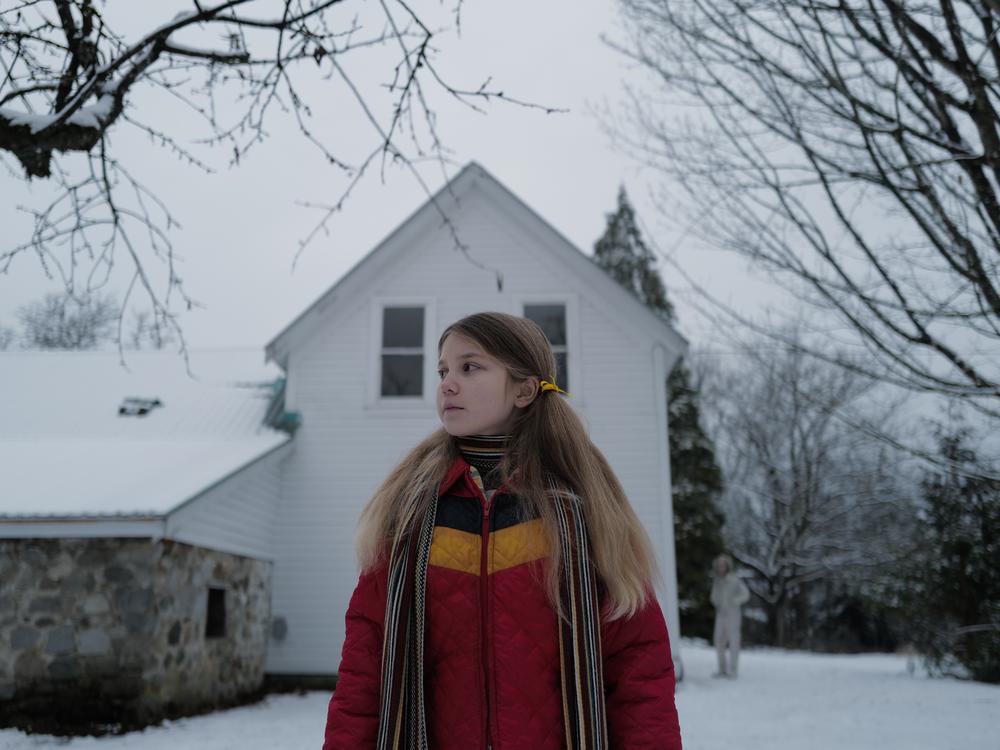Section Branding
Header Content
'Longlegs' is a terrifying serial killer — who never touches his victims
Primary Content
I have friends who can handle just about any kind of horror movie, except for the ones involving demonic possession and the occult. Oddly enough, that’s the subgenre I’ve always found the most comforting.
Some of these movies, like this year’s Immaculate and The First Omen, may exploit religion for easy scares. But they can also confront and affirm matters of faith with a sincerity that Hollywood rarely attempts. That’s why The Exorcist is not just one of the great horror films, but also one of the great religious films. It gives the devil his due, but it puts the fear of God in you, too.
There’s nothing remotely comforting, however, about the occult activity going on in Longlegs, a tense and frightening new movie in which evil is everywhere and God seems entirely absent. Part of what makes the film so effective is that it doesn’t really depend on secrets or surprises. The writer and director Osgood Perkins summons an atmosphere of dread so intense, it’s practically spoiler-proof.
We meet the nightmarish villain known as Longlegs in the very first scene. He’s a small-town oddball played with a big fright wig and creepy prosthetic makeup by an almost comically terrifying Nicolas Cage.
The authorities are stumped by Longlegs, a satanic serial killer who never once lays a finger on his victims. His crimes all appear to be clear-cut murder-suicides, in which a husband and father kills his family before taking his own life. But at each crime scene Longlegs leaves behind a letter, written in a code reminiscent of the Zodiac Killer, that makes clear there will be more murders to come.
To help crack the case, the FBI taps an upstart agent — that’s Lee Harker, played by Maika Monroe — who has psychic abilities. The clairvoyant detective is a cliché, but Perkins treats it with a conviction that makes it feel almost fresh.
Monroe came to fame fleeing supernatural terrors in the movie It Follows, and she was quietly mesmerizing a few years ago as a woman being stalked in the Hitchcockian thriller Watcher. Here, even when she’s playing the hunter instead of the hunted, she seems terrified — even haunted — by what she uncovers.
Of all the movies that inspired Longlegs, the clearest influence is The Silence of the Lambs, with its serial-killer cat-and-mouse games; Harker is basically the Clarice Starling to Longlegs’ Hannibal Lecter. Reinforcing the connection between the two movies, Longlegs is set in the ’90s, which explains the lack of cell phones.
That’s not the only way in which Perkins’ movie seems to have emerged from an earlier era. You’ve seen bits and pieces of this story countless times before: the crime-scene photos, the indecipherable puzzles, the killer’s sadistic taunts, the detectives’ dogged persistence. Longlegs reminded me of many other mysteries in which killers take an insidious hands-off approach, from Agatha Christie’s 1975 novel Curtain to Kiyoshi Kurosawa’s brilliant 1997 thriller, Cure.
But if elements of the story can feel derivative, Perkins’ filmmaking rarely is. Using eerily precise compositions and dimly lit interiors, he finds a brooding menace in seemingly ordinary places. Even when he unleashes a jump scare or a sinister home-video-style flashback, his control of tone never wavers.
Perkins gets sharp performances, too, from actors like Alicia Witt, as Harker’s fanatically religious mother, and Kiernan Shipka, as the one known survivor of Longlegs’ crimes. As for Cage, he’s as memorable as you’d expect. The actor may be no stranger to going wildly over-the-top, but I can’t recall him ever having played a figure of such pure, unmitigated evil.
And it’s that sense of evil, with no hope of escape or redemption in sight, that gives Longlegs its unsettling power. Even so, some of that power does dissipate in the closing stretch, when it’s finally revealed, so to speak, what the hell is going on. The solution makes a certain sense, but it’s also a little deflating. And it’s a reminder that, sometimes, an explanation has a way of ruining things — a joke, a mystery and even a good scare.

